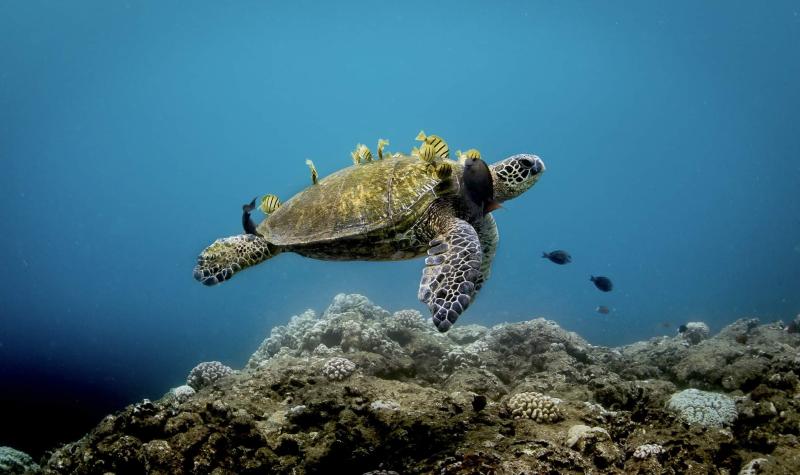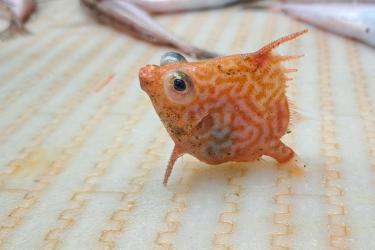In honor of World Wildlife Day, get a glimpse of some marine creatures our scientists have encountered in their work. NOAA Fisheries uses science to conserve, protect, and recover marine life and their habitats.
False Killer Whales
False killer whales—despite their name—are actually a type of dolphin. While they share some of their namesake with a killer whale due to their similarly-shaped skulls, their external appearance is quite distinct from their popular “sea panda” cousins.
Learn more about false killer whales and what you can do for them
Paper Nautilus
During the Northeast Fisheries Science Center's 2021 Fall Bottom Trawl Survey, biological science technician Christine Kircun ran into great weather and one cute paper nautilus. Despite having “nautilus” in its name, this species is actually a type of octopus. Secretions from glands on the female paper nautilus’ arms create a shell. This very thin shell protects the octopus itself and its eggs.
Northern Fur Seal
Through collaborative research, scientists are learning vital information about fur seal and sea lion biology and ecology from a surprising source: their whiskers!
See how a seal’s whiskers record a history of foraging, motherhood, and stress
Comb Jelly
A NOAA Fisheries research team discovered Duobrachium sparksae, a new species of ctenophore, or comb jelly. The discovery was made during an underwater expedition led by the NOAA Office of Ocean Exploration and Research. The new species and a new virtual method of describing and documenting the discovery are both explained in Plankton and Benthos Research.
Strawberry Squid
During a 2019 Deep-See cruise aboard the NOAA Ship Henry B. Bigelow, scientists caught three very large strawberry squid. The largest had a mantle length of about 11.5 inches and an overall length of roughly 39 inches. Scientists were glad to see squid in the deep scattering layers of the mesopelagic zone, also affectionately called the ocean twilight zone.
Learn more about the deep-sea cruise and what scientists saw
Green Sea Turtle and Hawaiian Monk Seal
A team of biologists from NOAA’s Pacific Islands Fisheries Science Center completed a field season in the remote islands of the Papahānaumokuākea Marine National Monument in 2021. During this time, biologists collected data on some of the iconic threatened and endangered species of Hawaiʻi—Hawaiian green sea turtles and Hawaiian monk seals.
Learn more about this research
Fish in Kelp
Kelp forests in California serve as nurseries for many species of fish, including these juvenile blacksmiths.
Fish and Coral
Pocillopora grandis coral colonies serve as a welcome shelter for butterflyfish and damselfish.
Sawfish
Sawfish skeletons are made of cartilage like sharks and rays. Their gills are on the ventral side (underside) of their body. There are five species of sawfish around the world but only one is still found within the United States. All sawfish are endangered.
Species information on small tooth sawfish
Southern Resident Killer Whale
Endangered Southern Resident killer whales spend several months of the summer and fall each year in Washington State's Puget Sound. The population is composed of three family groups of whales that have been named J, K, and L pods. Individual animals are identified by a number based on pod membership and birth order. Learn the latest on Southern Resident killer whales with Dr. Megan Wallen, a marine mammal specialist in NOAA Fisheries West Coast Protected Resources Division.
East Pacific Red Octopus
This little octopus was found by scientists conducting the 2021 California Current Ecosystem Survey aboard the NOAA Ship Reuben Lasker. They identified it as an East Pacific red octopus, Octopus rubescens, before placing it back in the water to grow and live.













